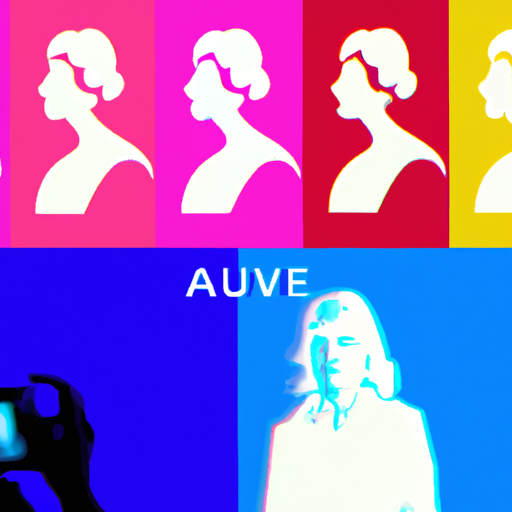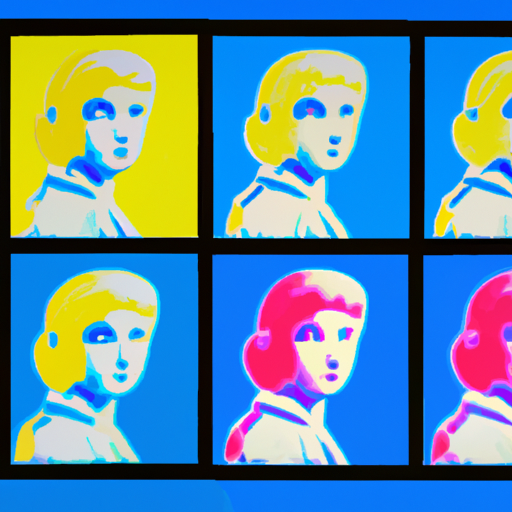
-
Table of Contents
The Evolution of Icon Design in Illustration

Icons have become an integral part of our digital lives. From the small symbols on our smartphone screens to the recognizable logos of our favorite apps, icons play a crucial role in communication and user experience. Over the years, icon design in illustration has evolved significantly, adapting to changing technologies, design trends, and user expectations. In this article, we will explore the evolution of icon design, from its humble beginnings to the sophisticated and versatile icons we see today.
The Early Days of Icon Design
In the early days of computing, icons were simple and pixelated due to the limited graphical capabilities of the hardware. These icons were primarily used to represent files, folders, and applications on the desktop. The iconic “trash can” and “floppy disk” icons are examples of early designs that have become universally recognized symbols.
As technology advanced, so did icon design. With the introduction of graphical user interfaces (GUIs) in the 1980s, icons became more visually appealing and started to resemble real-world objects. The use of color and shading techniques added depth and dimension to the icons, making them more visually engaging.
The Rise of Flat Design
In the early 2000s, a new design trend called “flat design” emerged, which had a significant impact on icon design. Flat design moved away from the realistic and three-dimensional look of icons and embraced simplicity, minimalism, and a two-dimensional aesthetic.
Flat icons are characterized by clean lines, bold colors, and simple shapes. They are often devoid of shadows, gradients, and other visual effects. This minimalist approach not only made icons visually appealing but also improved their usability. Flat icons are easily recognizable at small sizes and can be scaled without losing clarity.
One of the most notable examples of flat design in iconography is the icon set used in Microsoft’s Windows 8 operating system. The “Metro” design language, as it was called, featured square and rectangular icons with sharp edges and vibrant colors. This design language influenced many other platforms and applications, leading to a widespread adoption of flat icons.
The Advent of Skeuomorphic Design
While flat design gained popularity, another design trend called “skeuomorphic design” emerged as a reaction to the minimalism of flat icons. Skeuomorphic icons aimed to mimic real-world objects and textures, often incorporating shadows, gradients, and other visual cues to create a sense of depth and realism.
Apple’s iOS 7, released in 2013, marked a significant shift towards skeuomorphic design. The operating system introduced a new set of icons that featured realistic textures, such as leather, metal, and glass. These icons aimed to create a more immersive and tactile user experience.
However, the skeuomorphic trend was short-lived, and designers soon realized that overly realistic icons could be visually overwhelming and confusing. Users found it difficult to distinguish between icons due to the abundance of visual details. As a result, the design community started to move away from skeuomorphic design and towards a more balanced approach.
The Modern Era of Icon Design
In recent years, icon design has evolved to strike a balance between flat design and skeuomorphic design. This approach, often referred to as “semi-flat” or “material design,” combines the simplicity and clarity of flat icons with subtle hints of depth and realism.
Material design, introduced by Google in 2014, has become a widely adopted design language for icons and user interfaces. Material icons feature clean lines, simple shapes, and vibrant colors, while also incorporating subtle shadows and gradients to create a sense of depth.
Another notable trend in modern icon design is the use of abstract and geometric shapes. Icons no longer need to resemble real-world objects; instead, they can be simplified representations that convey meaning through shape and color. This approach allows for more creativity and flexibility in icon design.
The Impact of Responsive Design
With the rise of mobile devices and responsive design, icon design has faced new challenges. Icons need to be adaptable to different screen sizes and resolutions while maintaining their clarity and recognizability.
Responsive icon design involves creating multiple versions of an icon to ensure optimal display on various devices. For example, an icon may have a simplified version for small screens and a more detailed version for larger screens. This approach ensures that icons remain legible and visually appealing across different devices.
The Future of Icon Design
As technology continues to advance, the future of icon design holds exciting possibilities. Here are some trends and developments that we can expect to see:
- Animated Icons: With the increasing use of animations in user interfaces, animated icons are likely to become more prevalent. These icons can provide additional feedback and enhance the user experience.
- Microinteractions: Icons will play a crucial role in microinteractions, which are small, subtle animations or visual cues that provide feedback and guide users through an interface. Microinteractions can make interactions more engaging and intuitive.
- Customizable Icons: Users may have the ability to customize icons to suit their preferences and needs. This could involve changing colors, shapes, or even adding personal images to icons.
- Augmented Reality (AR) Icons: As AR technology becomes more widespread, icons in the physical world could be replaced or augmented with digital icons. These icons could provide additional information or interactive elements.
Conclusion
Icon design in illustration has come a long way since its early days. From simple and pixelated symbols to sophisticated and versatile designs, icons have evolved to meet the changing needs and expectations of users. The shift from realistic and three-dimensional icons to flat design and the subsequent emergence of semi-flat design have shaped the modern era of icon design.
As technology continues to advance, icon design will continue to evolve. The future of icon design holds exciting possibilities, including animated icons, microinteractions, customizable icons, and augmented reality icons. Regardless of the direction icon design takes, one thing is certain: icons will remain an essential element of visual communication and user experience.
